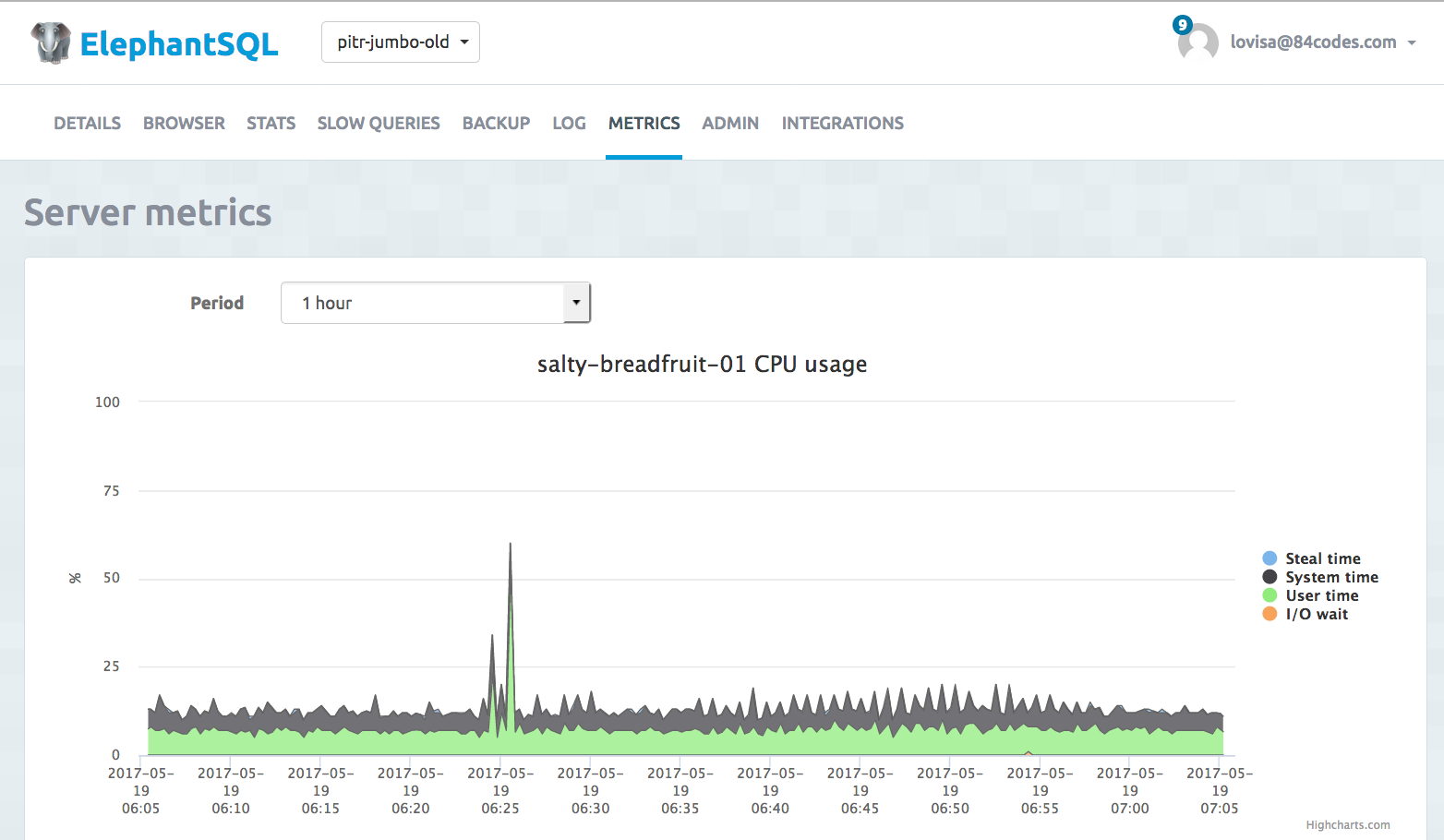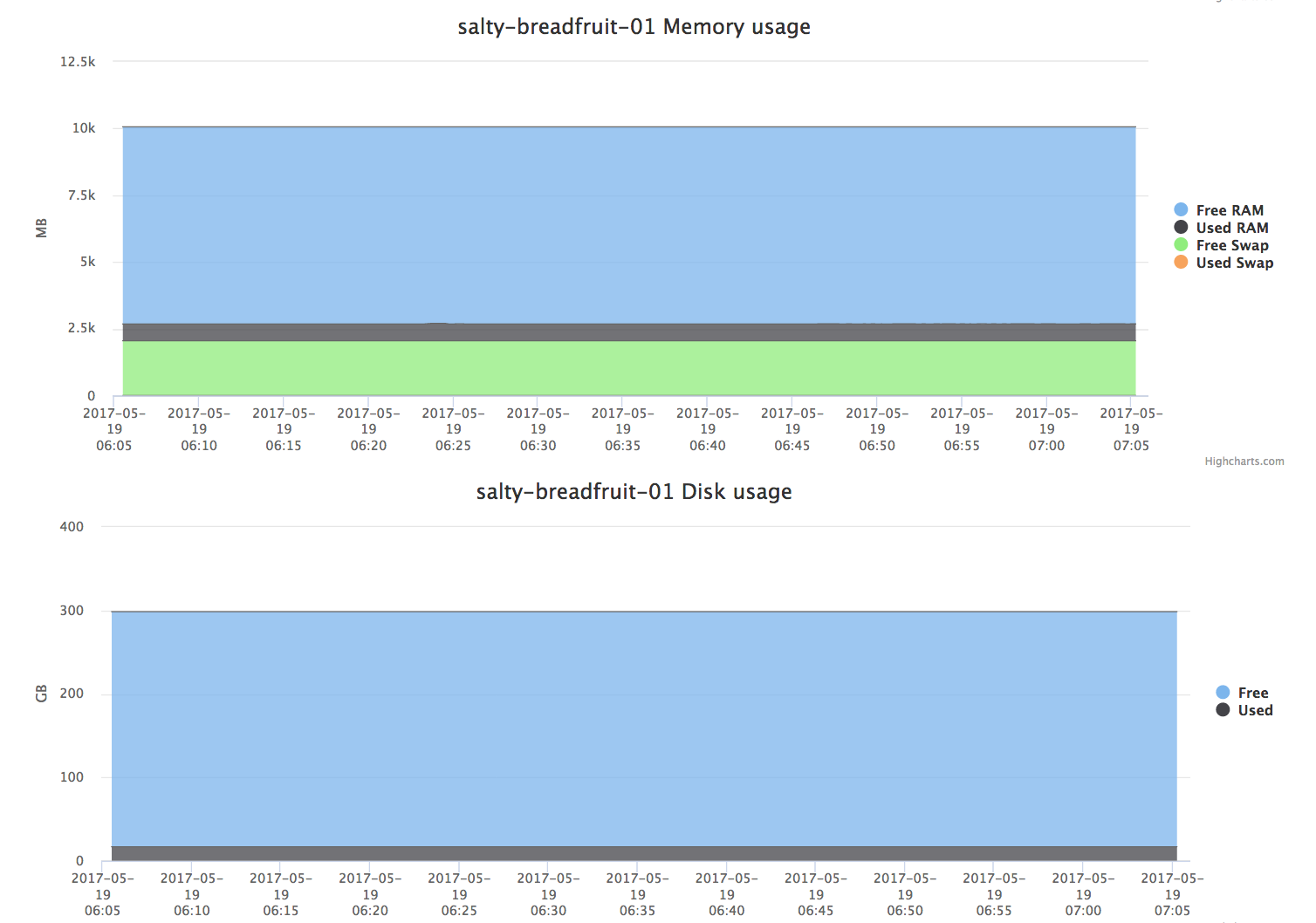ElephantSQL Monitoring Tools
ElephantSQL offers various monitoring tools. These tools will address performance issues promptly, before they impact your business. ElephantSQL monitoring includes diagrams for CPU and Memory usage. It is possible to activate alarms to be triggered when a part of the system is heavily used and it is easy to view the PostgreSQL log stream directly in ElephantSQL.
Alarms
For dedicated plans only
Receive accurate alerts based on performance anomalies in your application. It is possible to activate CPU, RAM and Memory alarms for your instance.
Alarms can be sent to email addresses, as push notifications to webhooks, to slack, to PagerDuty to VictorOps or OpsGenie. When an alarm is triggered will an alert be sent to everyone specified in the notifications list. You need to setup a notification before any of the alarms will work correctly. More information about payload sent when using webhook can be found here.
PostgreSQL log and Integrated monitoring services
For dedicated plans only
ElephanSQL Log Stream show a live log from PostgreSQL.
Logs are a critical part of any system, they give you insight into what a system is doing as well what happened. You're able to ship your PostgreSQL logs from ElephantSQL dedicated instances to Papertrail, Splunk, Loggly, AWS CloudWatch Logs, Google Cloud Stackdriver Logging and Logentries.

Server metrics
For dedicated plans only
ElephantSQL offers various monitoring tools. These tools will address performance issues promptly and automatically, before they impact your business. ElephantSQL monitoring includes diagrams for CPU, disk and memory usage.
CPU Usage
CPU Usage refers to how much work your processor is doing.
-
I/O Wait:
Show percentage of time spent by the CPU waiting for a IO (input/output) operation to complete, the percentage of time the CPU have to wait on the disk.
-
User time:
Show percentage of time your program spends executing instructions in the CPU. In this case, the time the CPU spent running PostgreSQL.
If this is high it probably means you are on the limit of what your server can handle. You should consider upgrading before lack of CPU power becomes a serious issue.

-
System time:
Describes percentage of time the CPU spent running OS tasks.
-
Steal time:
Percentage of CPU time "stolen" by the virtualization system - time spent when the virtual CPU waits for a real CPU. If this is high it means that you are using to much CPU power. This can seriously impact the performance of your server. You should probably upgrade to a larger instance.
Memory Usage
- Used: Percentage of used memory.
- Free: Percentage of free memory.
Disk Usage
- Used: Percentage of used disk space
- Free: Percentage of free disk space

Notifications payload - webhooks
Alarm notifications can be received via webhooks. This section describes the content payload that is being sent to you in each POST.
- type: Type of the alarm, including one of: cpu, memory, disk
- appname: Name of the instance that triggered the alarm
- hostname: Hostname of the instance that triggered the alarm
- threshold: Value threshold specified for the alarm
- time_until_fire: Time threshold specified for the alarm
- account_id: Account id of the instance that triggered the alarm